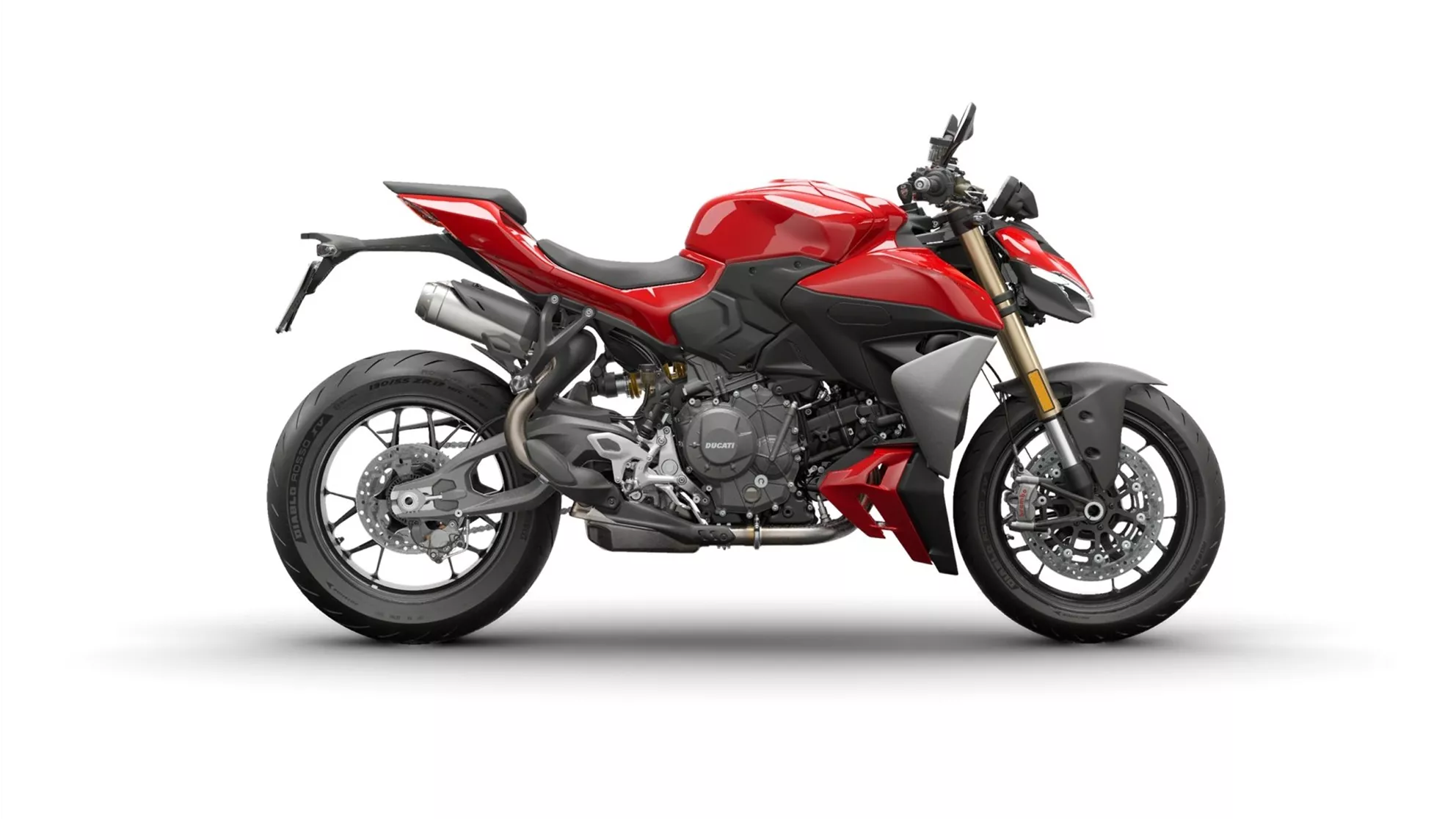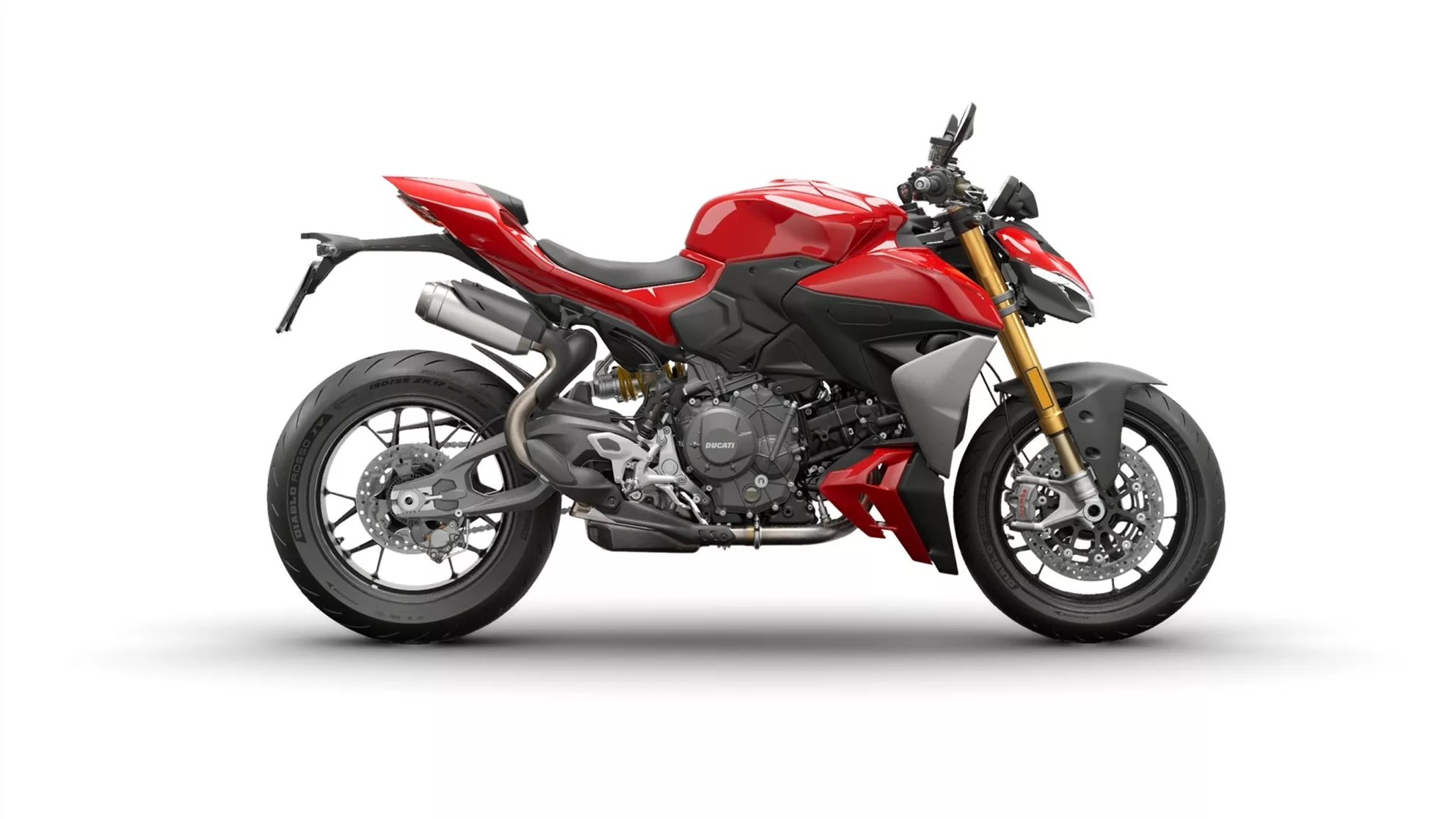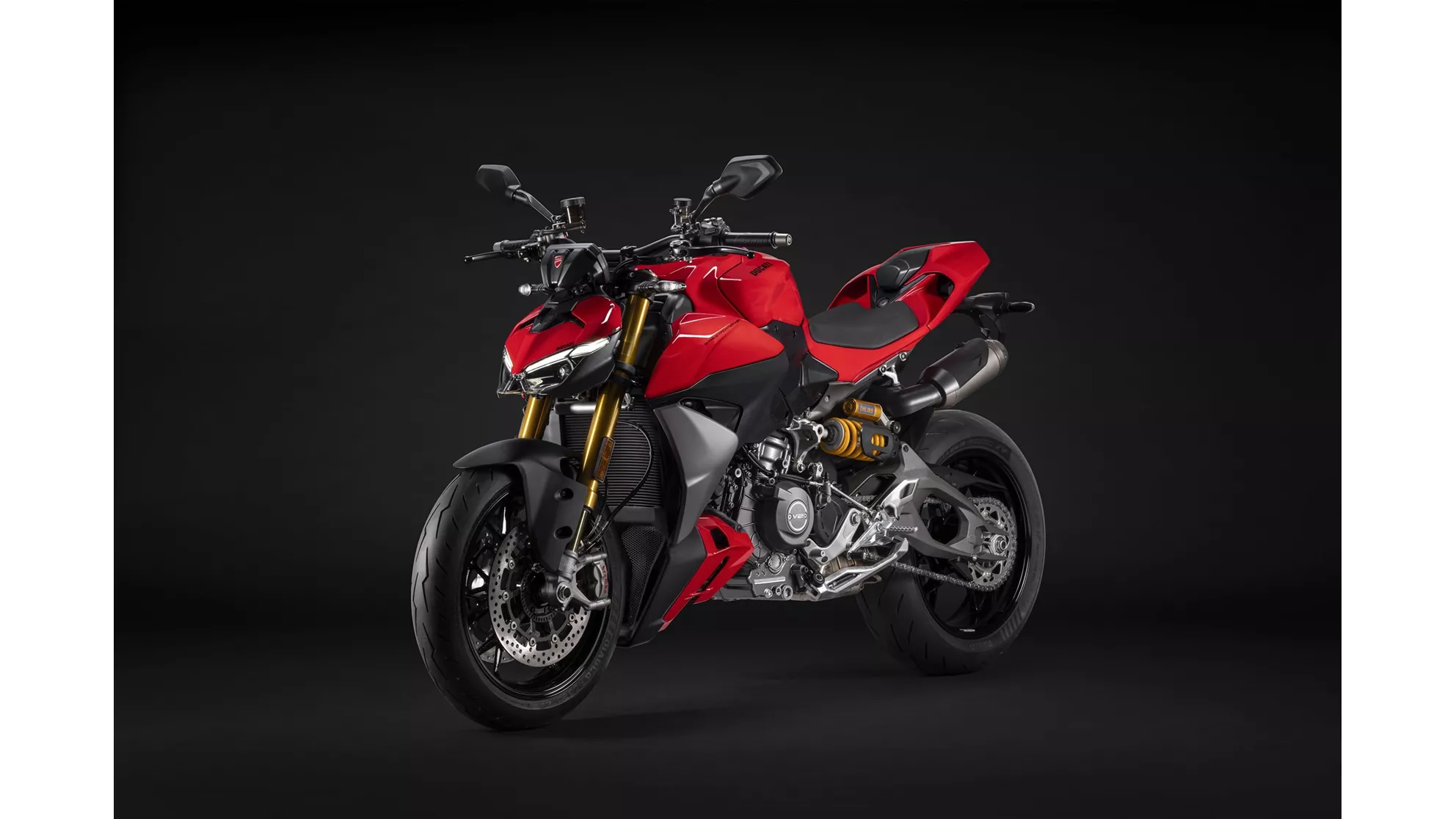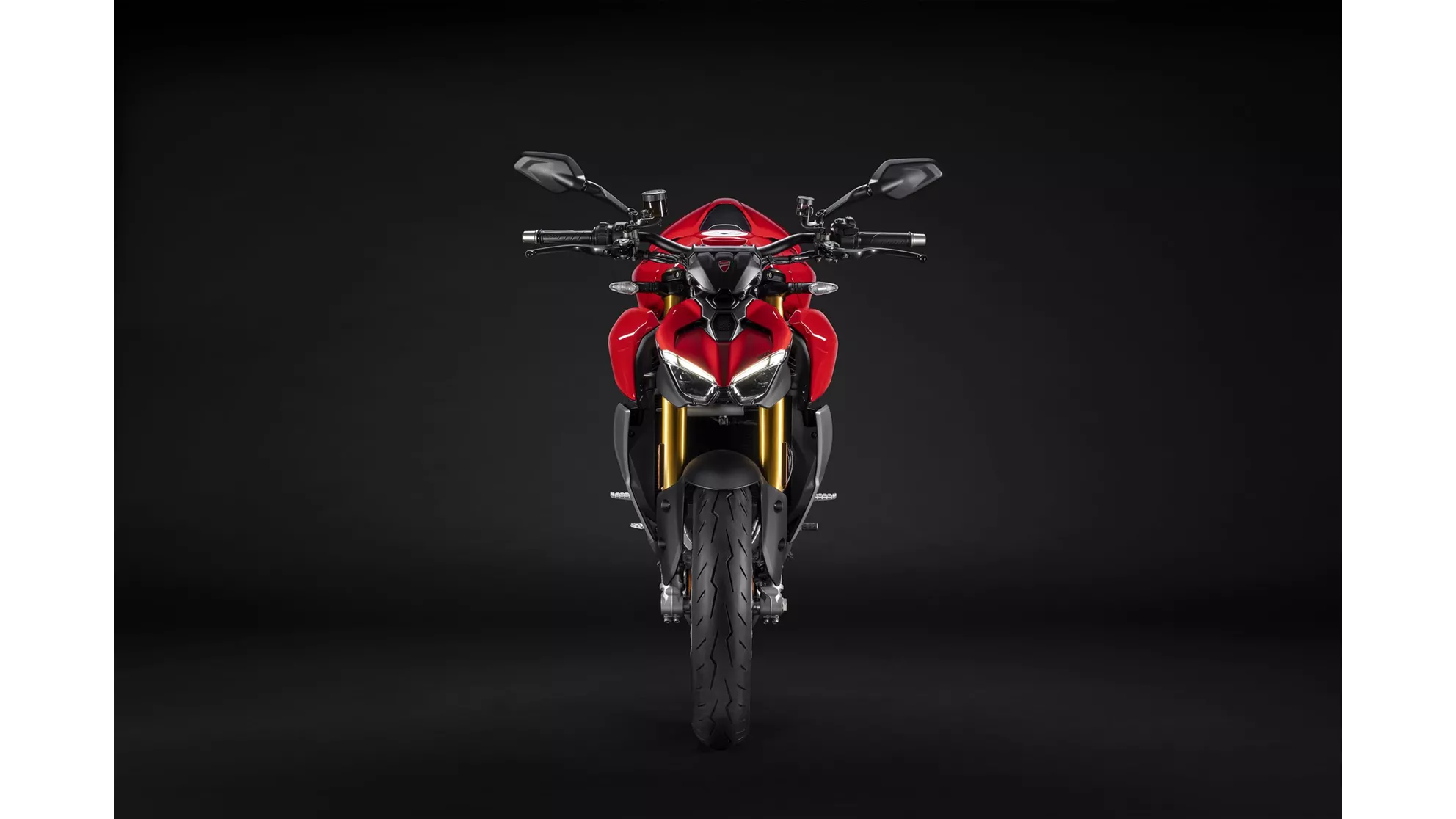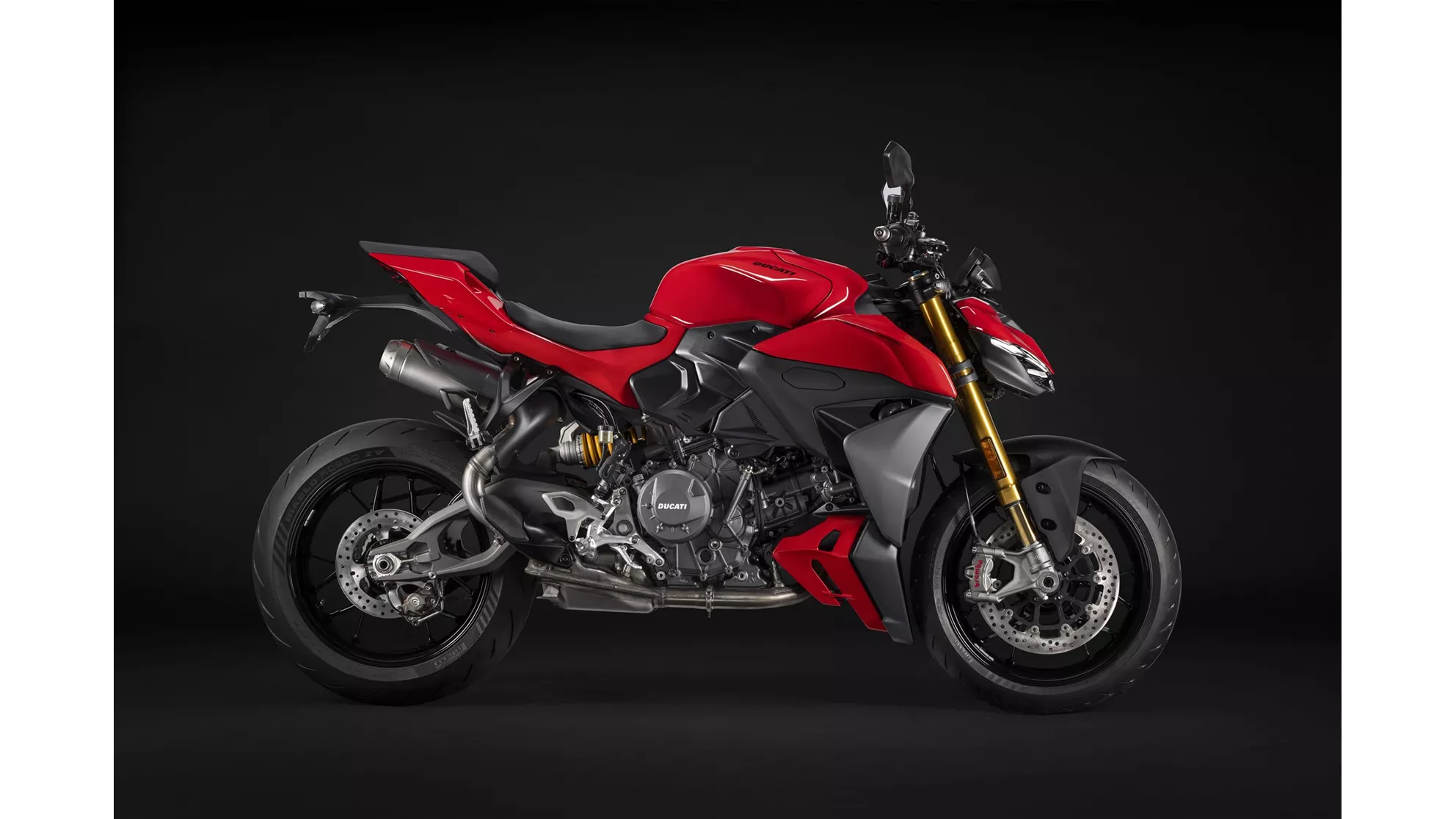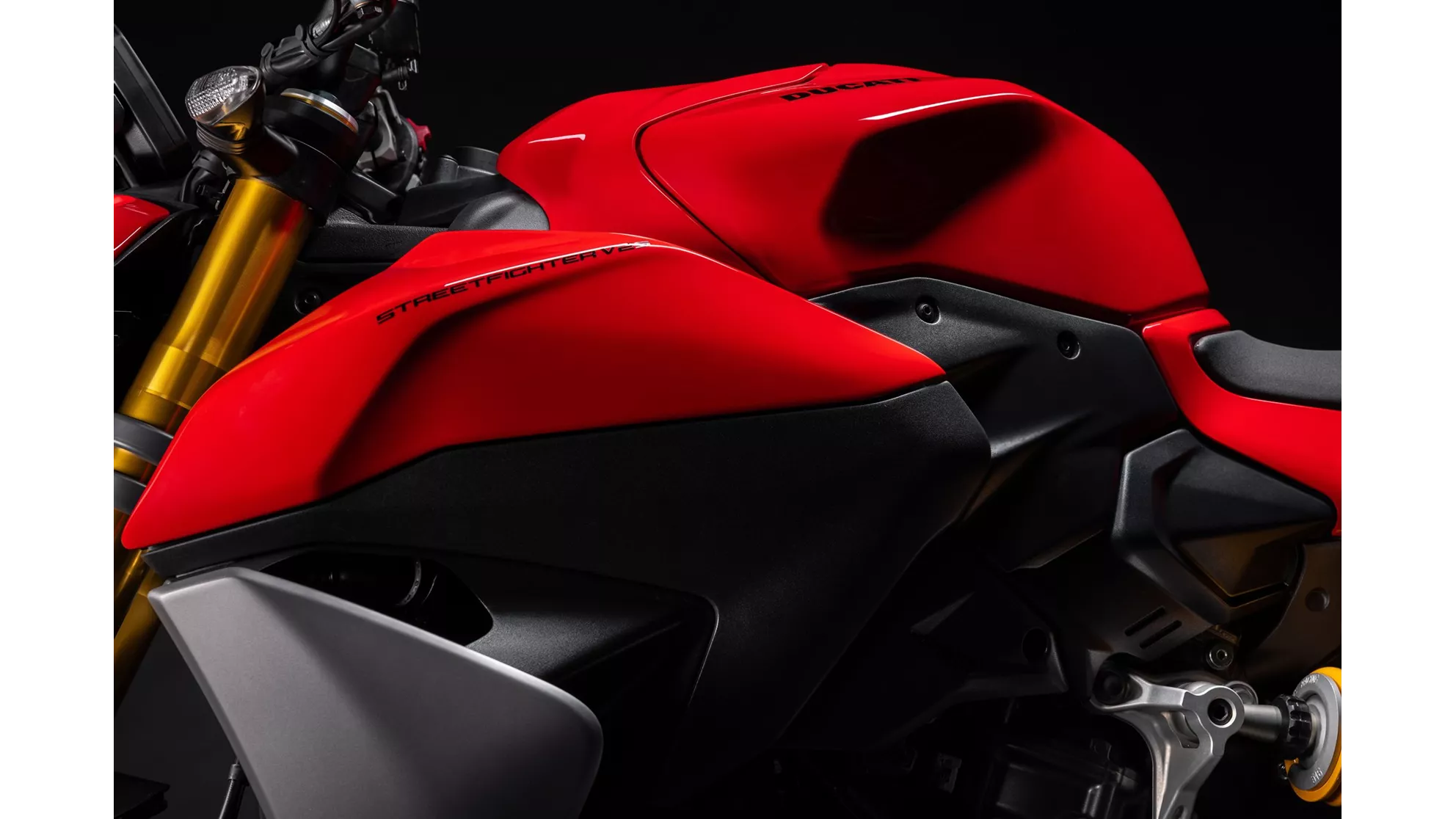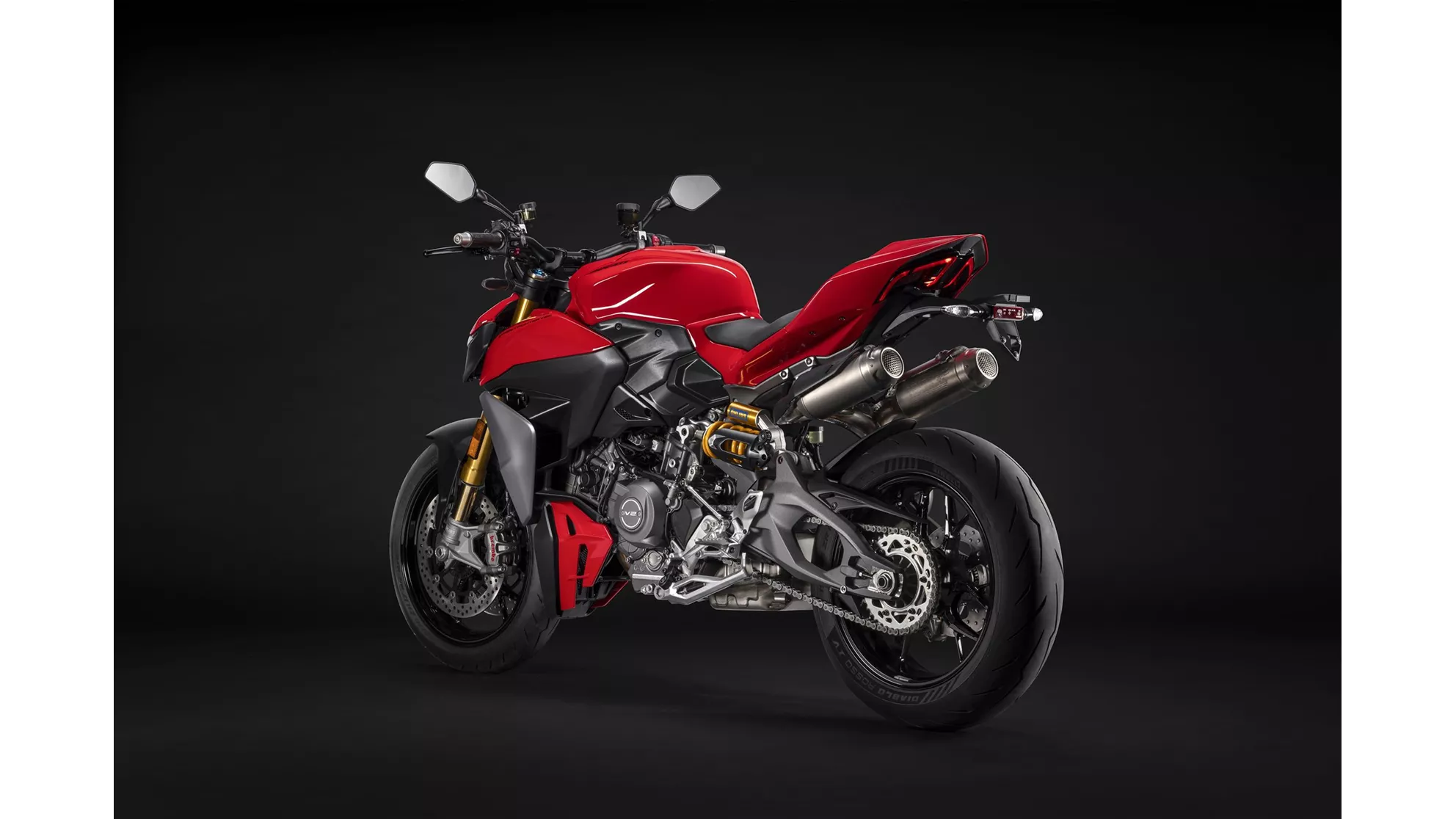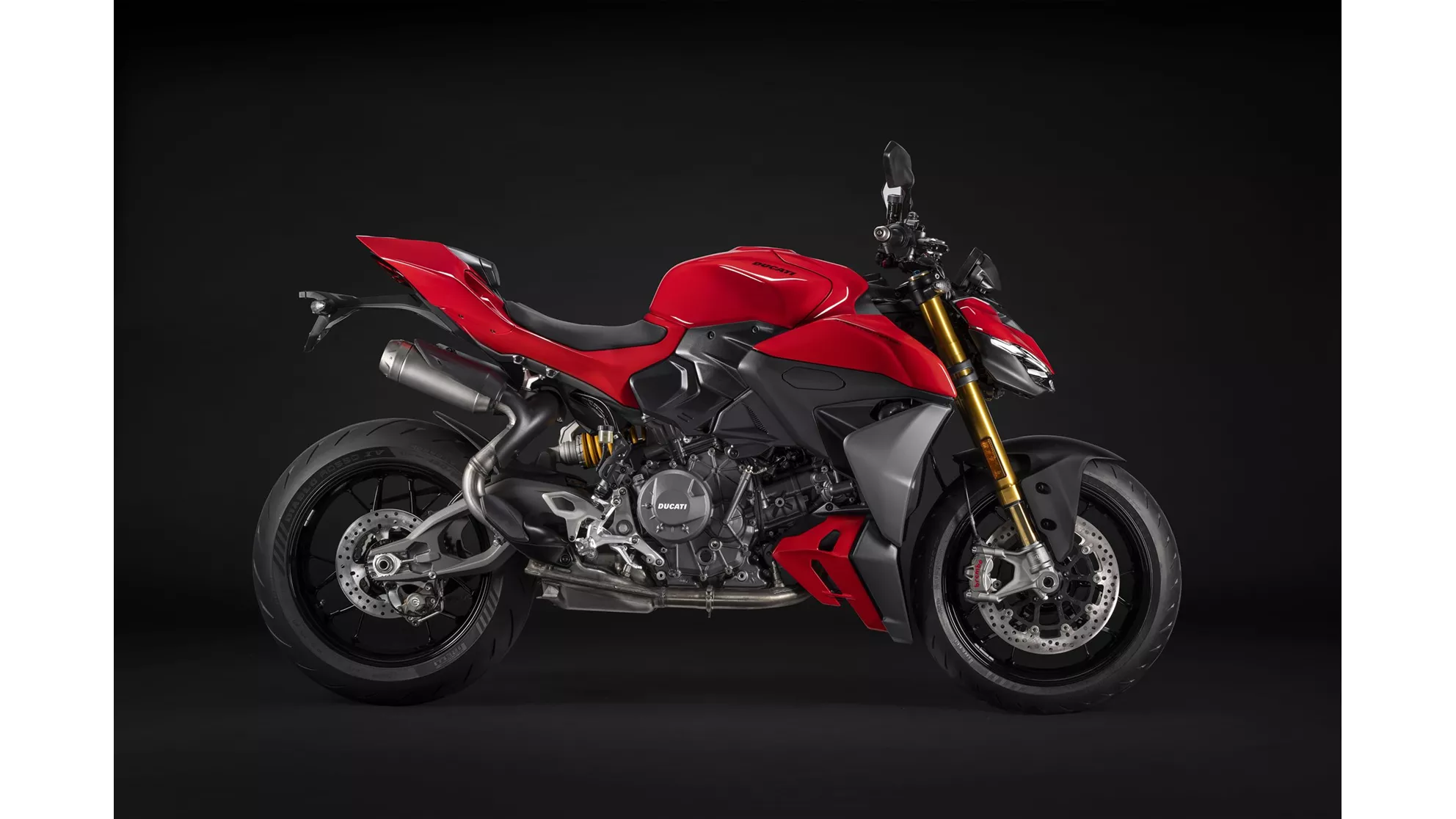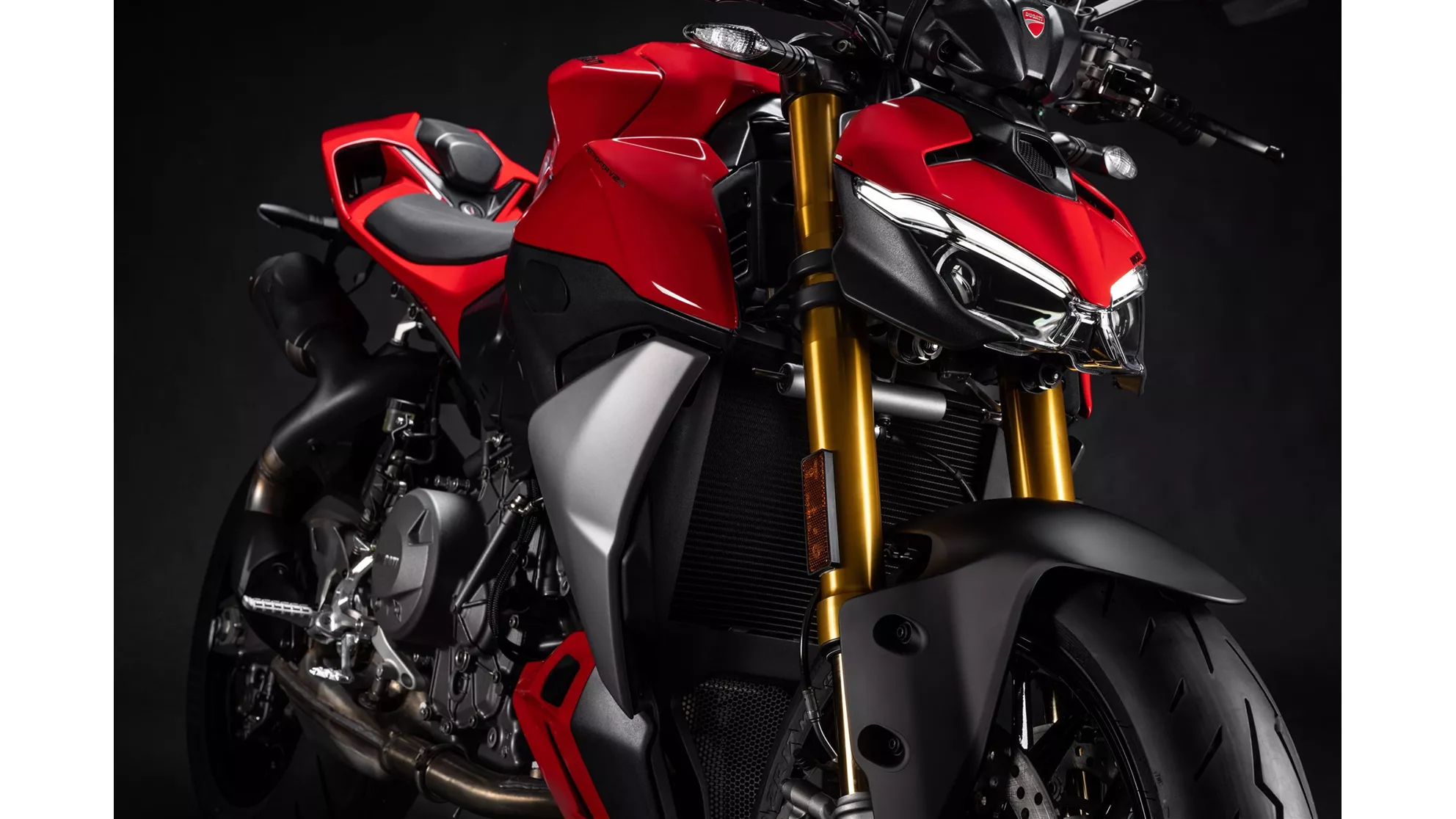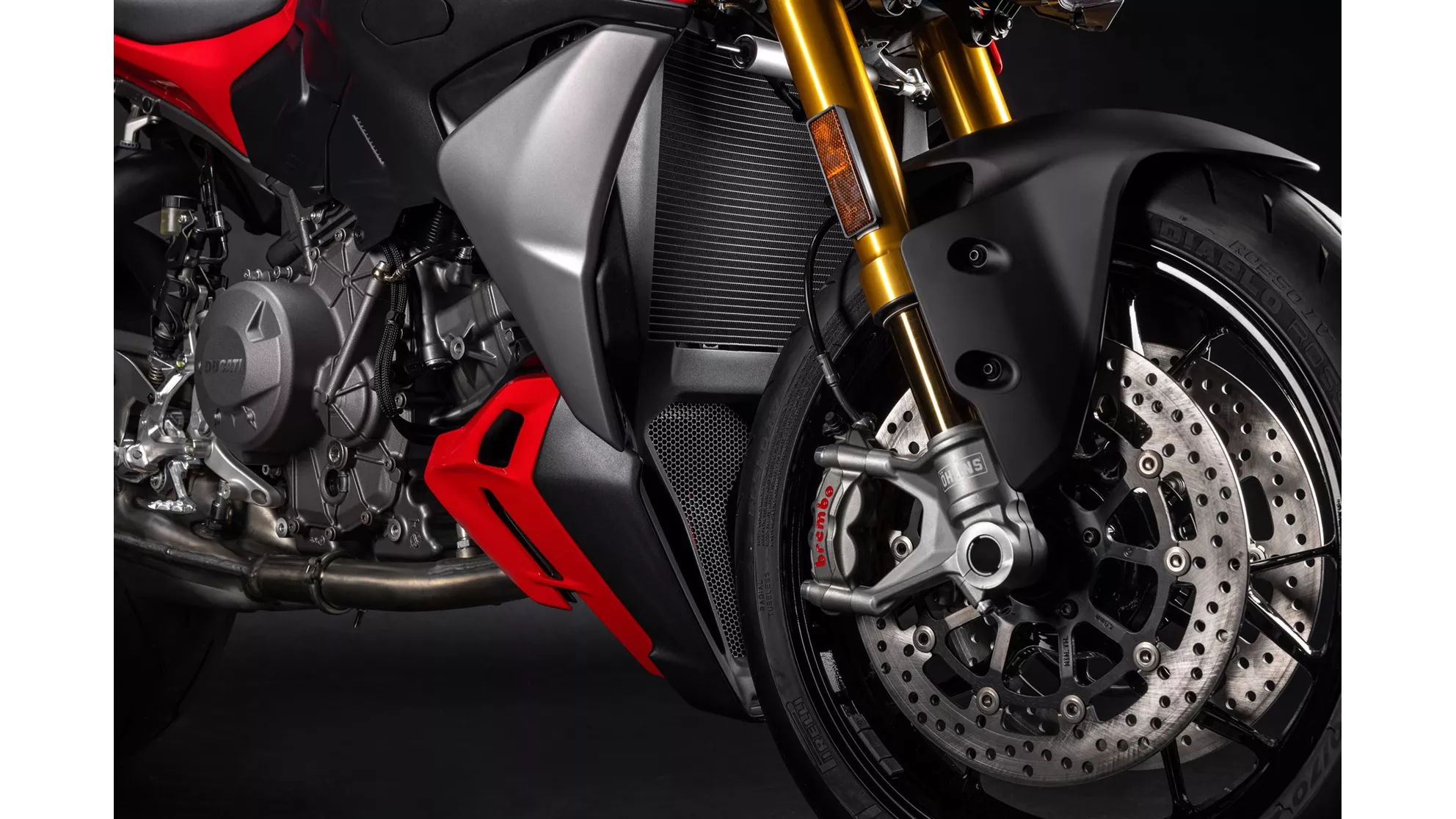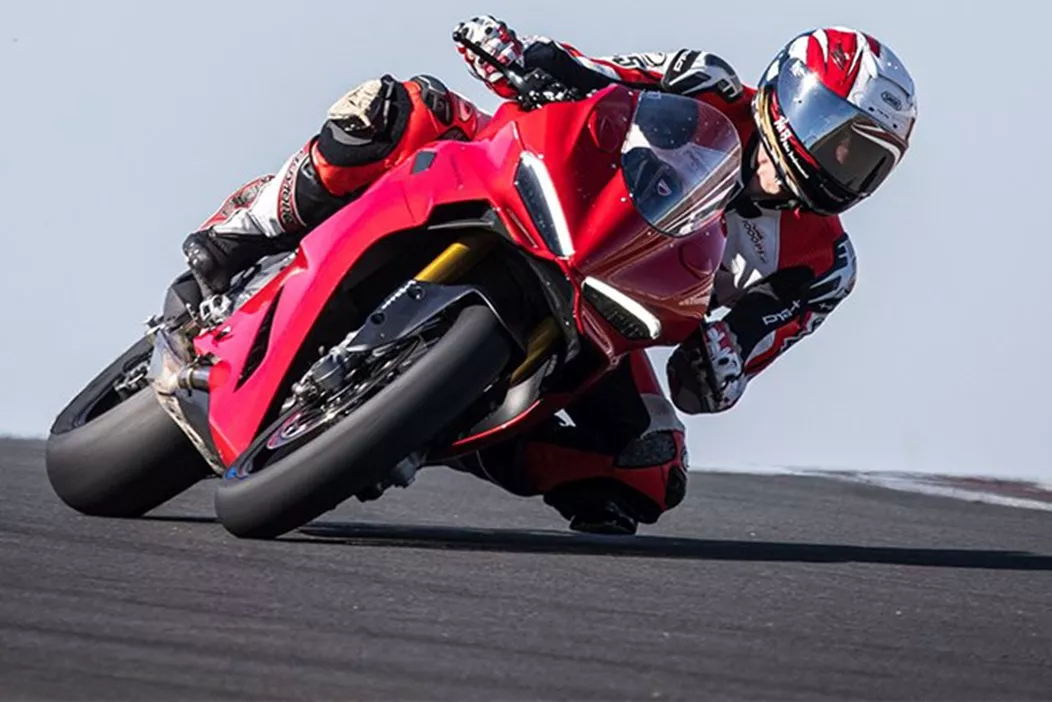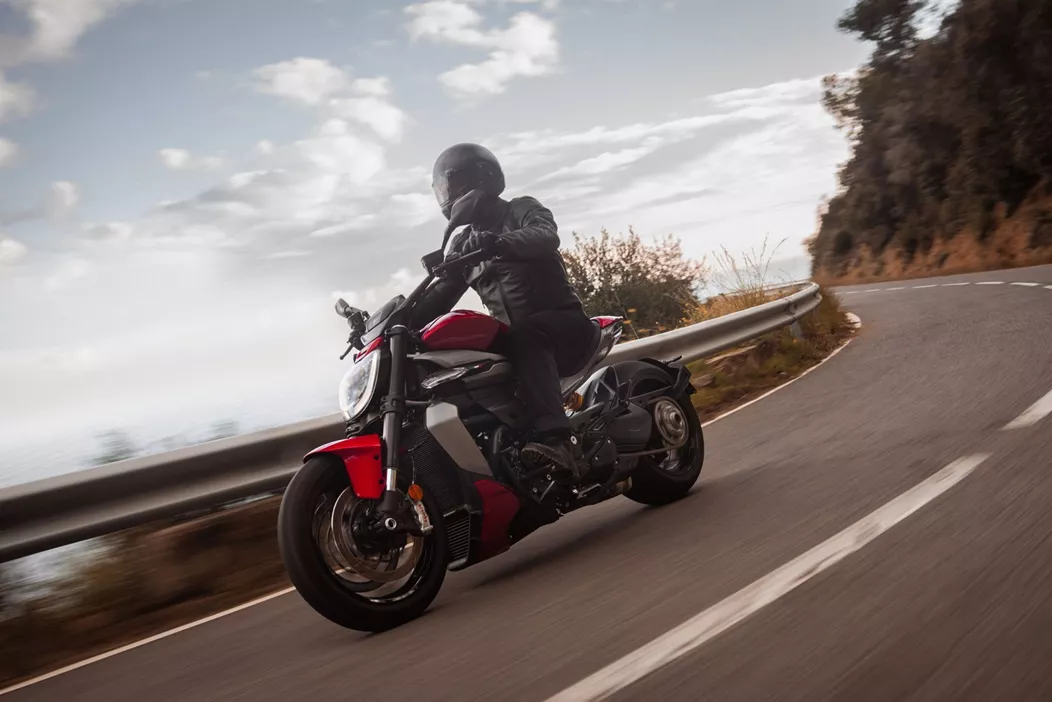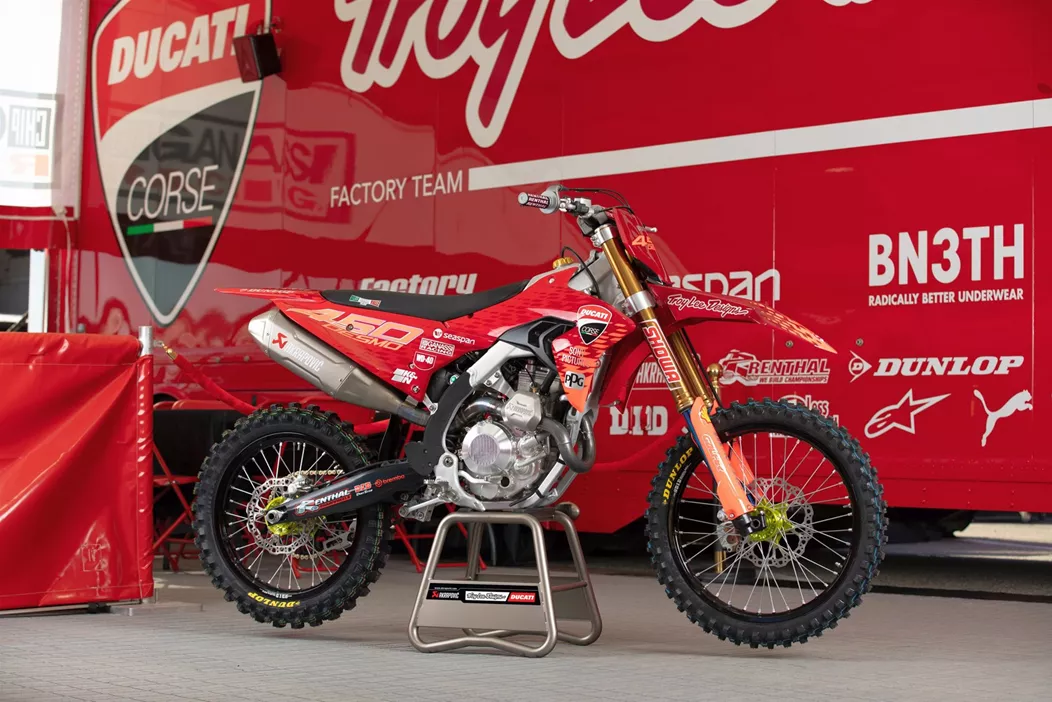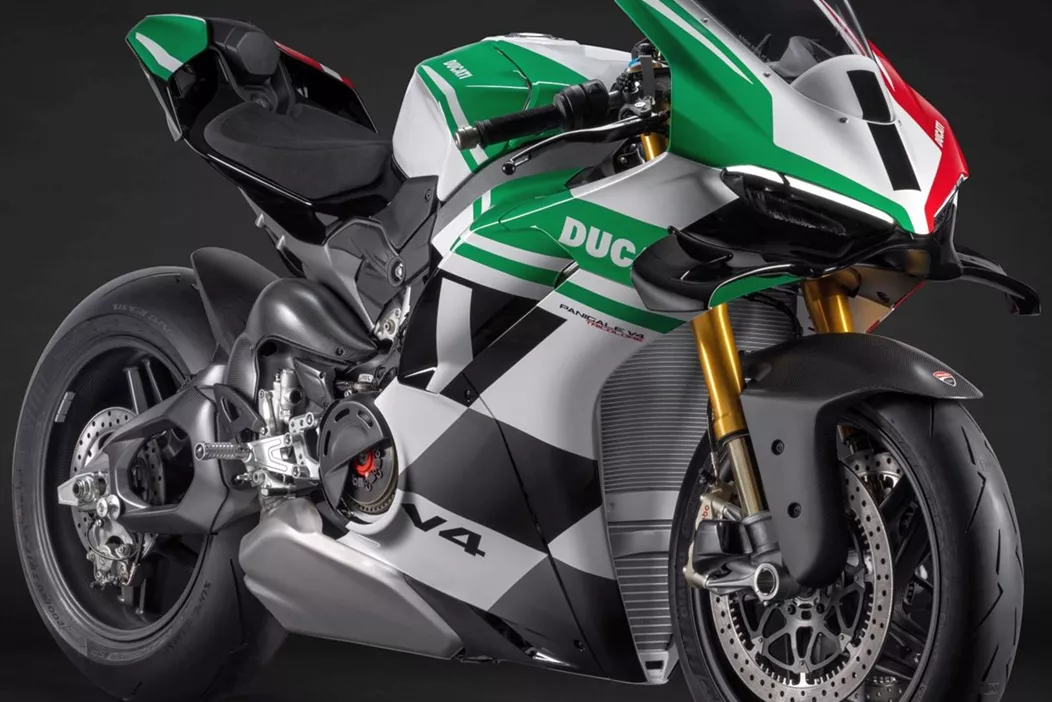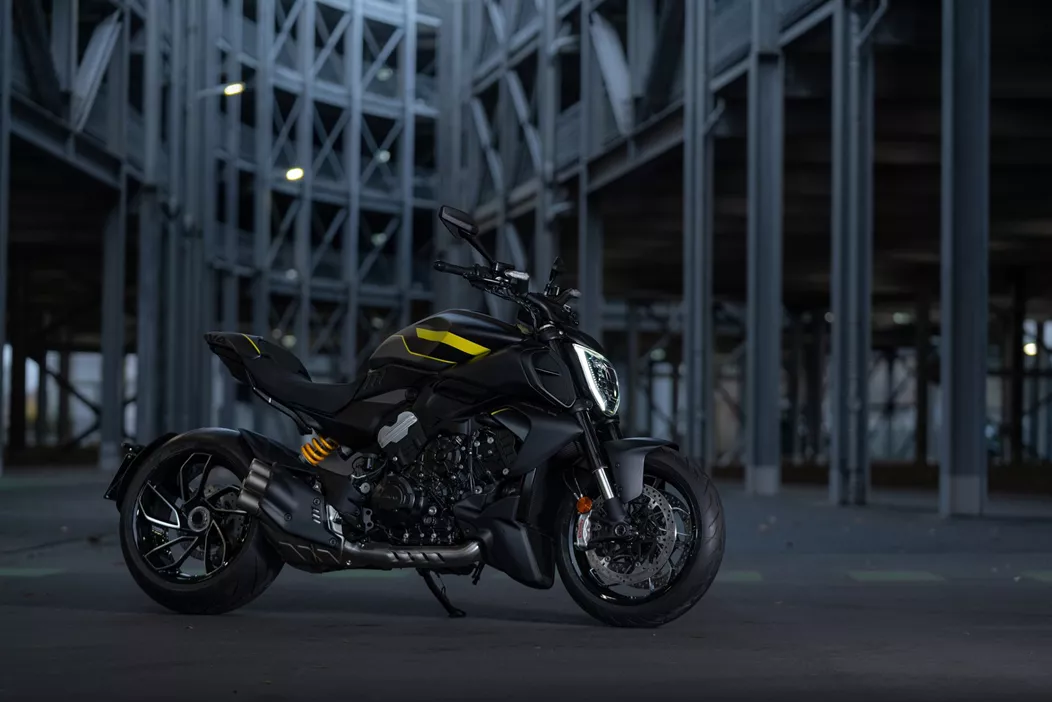The new 890 cc V2 engine delivers 120 hp and 93 Nm of torque - all direct and unfiltered, with no fairing in between. Weighing just 175 kg, the Streetfighter V2 is Ducati's lightest naked bike. As with its predecessors (Panigale and Streetfighter), the new Streetfighter V2 also draws its foundation from the Panigale V2. And what does that look like?
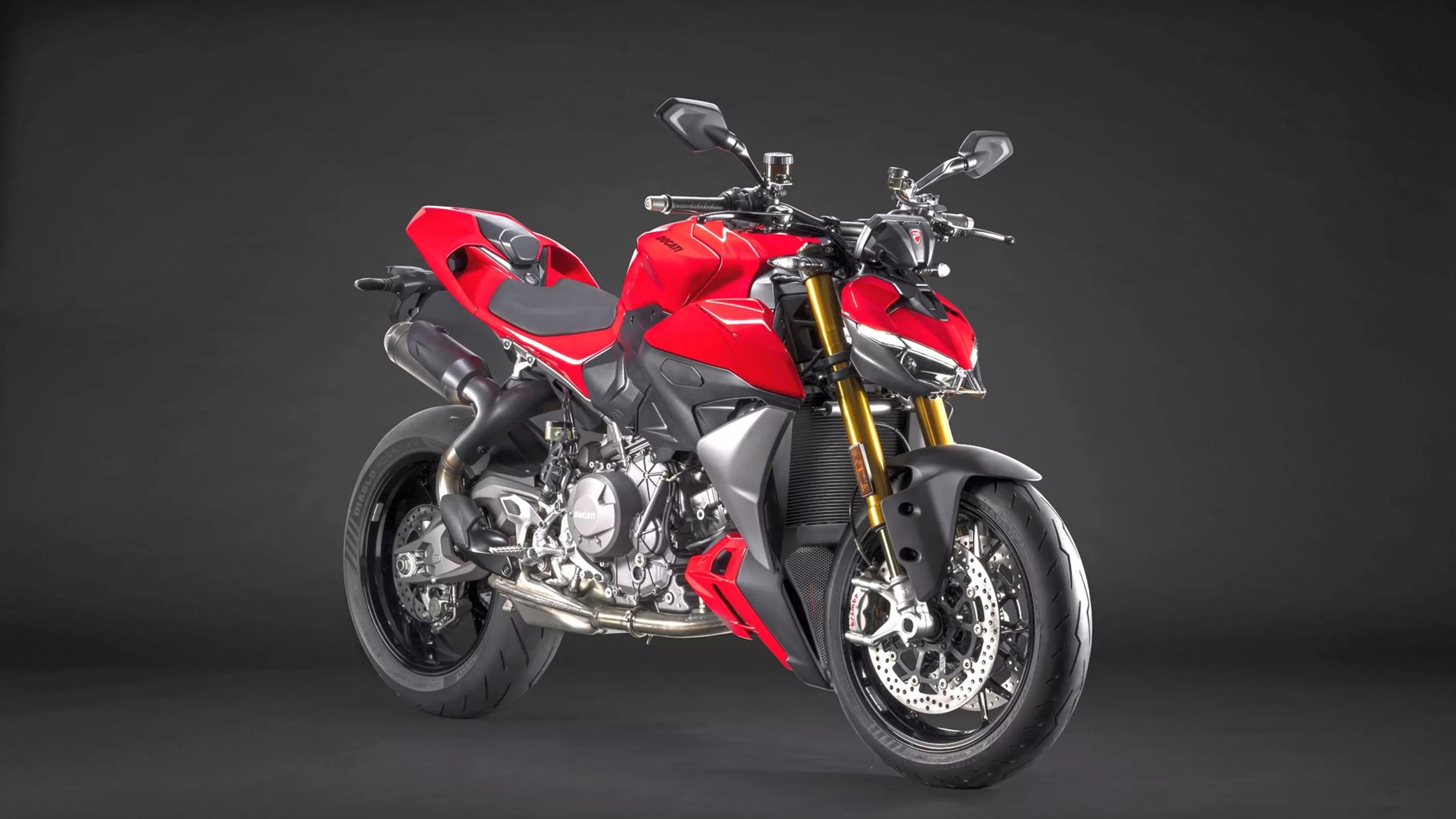
Ducati Streetfighter V2 2025 - The Naked with Fighting Spirit
The naked bike is completely new for the upcoming season.
With the Streetfighter V2, Ducati presents a new edition of the "Streetfighter" spirit - radical, raw, and uncompromisingly made for the street. Here, the essence of the new Panigale V2 is distilled to its core, resulting in a naked bike that focuses on maximum riding pleasure and is also intended to bring joy to beginners.
&width=72&height=72&bgcolor=rgba_39_42_44_0&mode=crop)
Martin_Bauer
published on 05/11/2024
The New Ducati V2 Engine 2025
The heart of the Streetfighter V2 is the completely new 90° V-twin engine. It features variable valve timing and is designed to provide the machine with linear and controllable power. Thanks to the IVT technology, more than 70% of the maximum torque is available at just 3,000 rpm. Together with the highly precise ride-by-wire system, every throttle movement is directly converted into propulsion. As mentioned earlier, the new V2 engine has been reduced in displacement and power, coming in at 890 cc and 120 hp in our offerings. The basic construction and the 90° cylinder angle have remained the same. However, Ducati managed to make the engine more compact and, above all, lighter due to the smaller displacement. An impressive 9.4 kg was shaved off the 955 Superquadro. This was achieved through many small details, such as hollow-drilled and chrome-plated valves. Additionally, DLC coatings are used in the valve train, and thanks to the increased wear resistance at the contact points, the component size can be reduced, thus saving weight again.
Ducati engine without Desmotronic
The new engine does not utilize Desmotronic technology. Instead, the valves are closed by springs, as is common with most other motorcycles. This eliminates the complex valve adjustment typical of Desmo engines, extending the valve clearance checks to a 30,000 km interval. A significant portion of the weight savings is due to the smaller casing design with reduced cooling channels and the water/oil heat exchanger located between the cylinders, which renders the oil cooler unnecessary. In addition to the weight advantage, the variable valve timing, already known from competitors, is used to compensate for the displacement disadvantage in the lower rev range. This improves performance at lower RPMs, ensuring a more consistent power delivery, which is particularly beneficial in street riding. Nevertheless, the maximum power is reached at 10,750 rpm, and the peak torque of 93 Nm at 8,250 rpm before the limiter kicks in at 11,350 rpm. With the optimized exhaust system available as an accessory, the engine is expected to reach 126 HP. Based on these figures, those seeking maximum thrust will likely need to stay in the higher rev ranges.
Ducati takes a unique approach with its standard exhaust system. While the exhaust features two under-seat mufflers similar to the V4 Racing system, the routing of the pipes to the rear is somewhat unconventional. Typically, efforts are made to elegantly conceal these within the motorcycle, but in this case, they are routed far back underneath and then prominently directed upwards alongside the swingarm. This might be an attempt to keep the heat radiation, known from the Panigale, away from the rider. Whether this is visually appealing remains to be seen. The anti-hopping clutch operates in oil, thus preventing the earlier Ducati-typical clutch rattling at idle, which would hardly be permissible under today's noise restrictions. Naturally, the new engine complies with the latest Euro 5+ standard, making it suitable for future applications. For this reason, the engine will also be available with 115HP and a larger flywheel mass to accommodate other motorcycle types with additional concessions towards riding comfort/touring.
Chassis of the new Streetfighter V2 2025
The monocoque frame of the Streetfighter V2 is cast from aluminum and is very light at 4kg. It is directly attached to the cylinder head of the engine, which strengthens the motorcycle's structure while simultaneously reducing weight. With a wheelbase of 1,493 mm, a steering geometry of 24.1° rake, and 103 mm trail, the Streetfighter V2 is slightly more stability-oriented than the Panigale. This is necessary for a Streetfighter due to the upright seating position and wide handlebars, which can promote a certain instability. The swingarm, like on the Panigale, is a double-sided design. With a seat height of 838mm, average to tall riders will find it comfortable, but shorter riders might find it a bit challenging. Overall, weight savings have been made in these areas as well, and with a light lithium battery, the total weight of the vehicle has been reduced by an impressive 15kg compared to its predecessor, now weighing only 178kg ready to ride without fuel.
When it comes to brakes, Ducati typically relies on Brembo. With two 320mm discs at the front, gripped by M50 calipers, the new Streetfighter should effortlessly deliver braking performance.
- How much does a Ducati Streetfighter V2 cost?
- Here you will find an overview of the price level of new and used motorbikes!
Chassis: Ducati Streetfighter V2 S with Öhlins components
In the standard version, a 43mm Marzocchi fork is used at the front and a Kayaba shock absorber at the rear, while the "S" variant fully relies on Öhlins. This time, however, no electronic adjustability is to be implemented, thus making concessions towards pricing. Nevertheless, all suspension setups feature a fully adjustable system.
Electronics and Riding Modes
In addition to the 5" TFT display, the Streetfighter V2 features an advanced electronics package based on a 6-axis inertial platform. The functions include:
- Sporty ABS Cornering: Provides additional safety when braking in corners.
- Ducati Traction Control (DTC): Prevents the rear tires from spinning.
- Ducati Wheelie Control (DWC): Controls the front wheel lift during acceleration.
- Engine Brake Control (EBC): Regulates the engine braking.
- Ducati Quick Shift 2.0: Allows for quick clutchless shifting.
The Streetfighter V2 offers four riding modes (Race, Sport, Road, Wet), allowing the rider to adjust the settings for all controls and the throttle response to suit their preferences and the respective riding conditions.
Conclusion: The New Ducati Streetfighter V2 2025
The design of the Streetfighter V2 incorporates iconic features of the series – an aggressive front profile with LED headlights and a muscular, stripped-down appearance. The full-LED lighting and the sleek, aerodynamically adapted silhouette visually set the machine apart from other naked bikes and emphasize its sporty heritage. Since the Streetfighter V2 also comes in an A2-compliant version, it will likely be a hot contender for beginners, provided they have a well-filled piggy bank to go full throttle.
More Ducati News
- How much does a Ducati Streetfighter V2 S cost?
- Here you will find an overview of the price level of new and used motorbikes!
More from 1000PS Magazine
Ducati Streetfighter V2 2025 - The Naked with Fighting Spirit Images
Source: 1000PS























